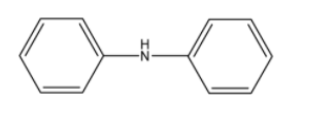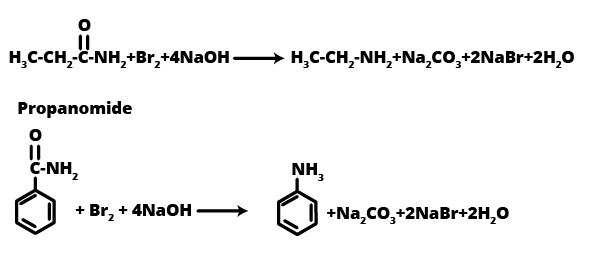Crucial Practice Problems for CBSE Class 12 Chemistry Chapter 9: Amines








FAQs on Important Questions for CBSE Class 12 Chemistry Chapter 9 - Amines 2024-25
1. What are important questions for CBSE Class 12 Chemistry Chapter 9 - Amines for the academic year 2024-25?
Important questions for CBSE Class 12 Chemistry Chapter 9 - Amines for the academic year 2024-25 are a collection of questions that cover the key topics and concepts of the chapter. These questions are designed to help students revise and practice effectively, ensuring a thorough understanding of amines.
2. Why are these important questions important for Class 12 Chemistry Chapter 9 - Amines?
These important questions are important for Class 12 Chemistry Chapter 9 - Amines as they focus on the essential concepts, reactions, and applications of amines. By practicing these questions, students can strengthen their understanding, improve problem-solving skills, and be better prepared for exams.
3. Where can I find these important questions for Class 12 Chemistry Chapter 9 - Amines?
You can find these important questions for Class 12 Chemistry Chapter 9 - Amines on various educational platforms, including online study resources, educational websites, or through reference books specifically designed for Class 12 Chemistry.
4. How can practicing important questions help me in my Class 12 Chemistry exams?
Practicing important questions helps students become familiar with the exam pattern, understand the types of questions asked, and improve their time management skills. It also allows students to identify their weak areas and focus on specific topics that require further attention.
5. Can relying solely on important questions be sufficient for Class 12 Chemistry Chapter 9 - Amines exam preparation?
While practicing important questions is beneficial, it is advisable to have a comprehensive approach to exam preparation. It is important to understand the underlying concepts, refer to the textbook, and solve a variety of questions to develop a thorough understanding of the chapter. Important questions can be a useful supplement to the overall preparation strategy.
6. What are amines?
Amines are considered organic derivatives of ammonia, NH3, in which one or more of the three Hydrogen is replaced by a carbon group. They are classified as primary, secondary, or tertiary depending on the number of carbon groups connected to the nitrogen atom. It is an important class of organic compounds. Amines constitute an important class of organic compounds
7. Write short notes on coupling reactions.
Coupling reaction: This is the reaction in which, arene diazonium salt reacts with an aromatic amino compound (in an acidic medium) or a phenol (in an alkaline medium) to form brightly colored azo compounds. The reaction usually takes place at the para position with respect to the hydroxyl or amino group. If the para position is blocked, it occurs at the ortho position, and if both ortho and para positions are occupied, then no coupling will occur.
8. Why are aliphatic amines stronger bases than aromatic amines?
Aniline and other aromatic amines show resonance due to which, the lone pair of electrons on the nitrogen atom gets delocalized over the benzene ring and making it less easily available for protonation. Therefore, aromatic amines are weaker bases than ammonia and aliphatic amines and the pKb value for aromatic amines is greater than for aromatic amines.
9. Write short notes on Gabriel's phthalimide synthesis.
Gabriel phthalimide synthesis is a method of preparation of pure aliphatic and aralkyl primary amines. Phthalimide on treatment with ethanolic KOH gives potassium phthalimide which on heating with a suitable alkyl Or aralkyl halides gives N-substituted phthalimides, which on hydrolysis with dilute HCI or with alkali give primary amines. Primary aromatic amines cannot be prepared by this method because aryl halides do not undergo nucleophilic substitution with the anion formed by phthalimide.
10. Where will I get notes and NCERT solutions for class 12th, chapter 9 of chemistry?
First and foremost, thoroughly read all of the NCERT topics on amines. If students have any questions about the chapter, they can review their fundamentals on the official Vedantu website. On its official website, Vedantu has also made quick revision notes and NCERT textbook exercise solutions available for your convenience.




































































